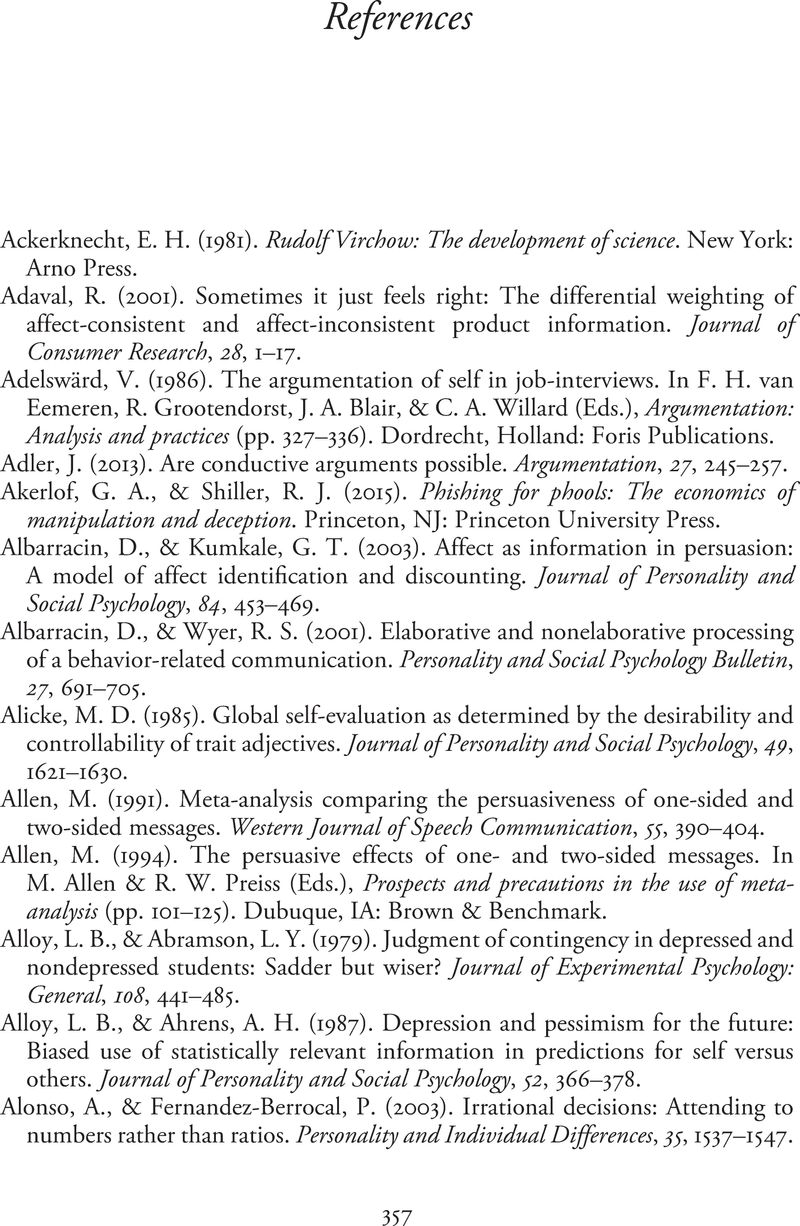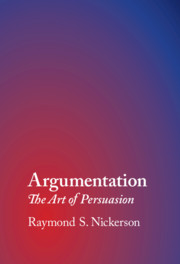Book contents
- Argumentation
- Books by the Author
- Argumentation
- Copyright page
- Dedication
- Contents
- Figures
- Tables
- Preface
- 1 Argumentation
- 2 Types of Argument
- 3 Evaluating Arguments
- 4 Persuasiveness
- 5 Plausibility
- 6 Fallacies
- 7 Biases, Misconceptions, and the Like
- 8 Other Flaws and Foibles
- 9 Stratagems
- 10 Improving Argumentation
- Book part
- References
- Name Index
- General Index
- References
References
Published online by Cambridge University Press: 27 November 2020
- Argumentation
- Books by the Author
- Argumentation
- Copyright page
- Dedication
- Contents
- Figures
- Tables
- Preface
- 1 Argumentation
- 2 Types of Argument
- 3 Evaluating Arguments
- 4 Persuasiveness
- 5 Plausibility
- 6 Fallacies
- 7 Biases, Misconceptions, and the Like
- 8 Other Flaws and Foibles
- 9 Stratagems
- 10 Improving Argumentation
- Book part
- References
- Name Index
- General Index
- References
Summary

- Type
- Chapter
- Information
- ArgumentationThe Art of Persuasion, pp. 357 - 426Publisher: Cambridge University PressPrint publication year: 2020

